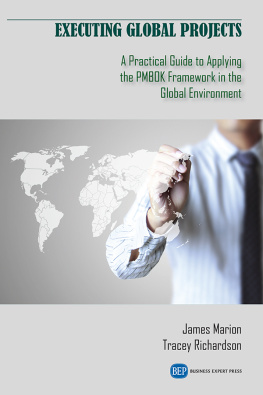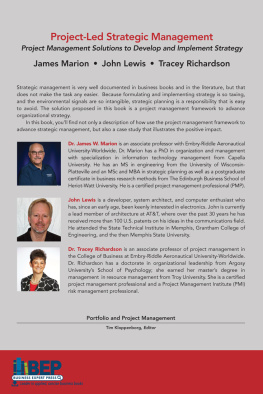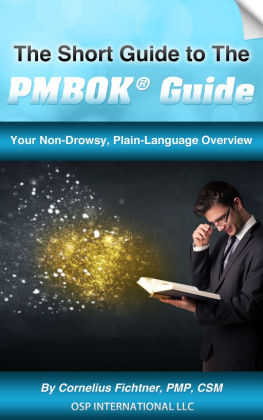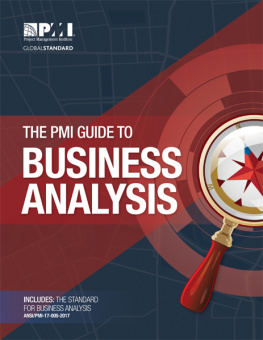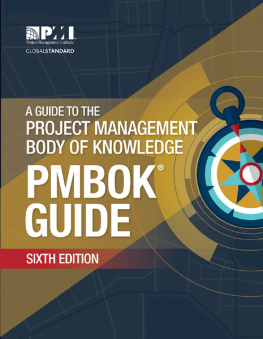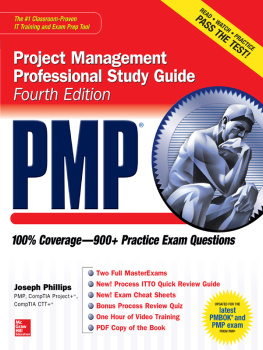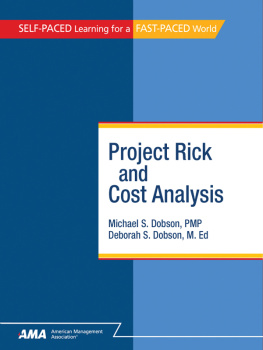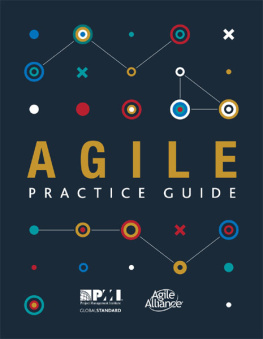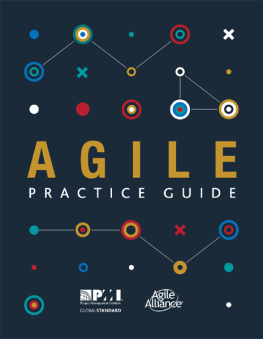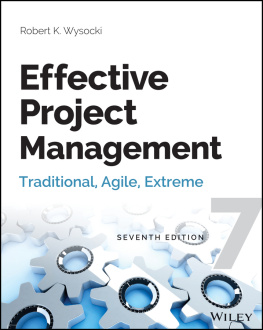Table of Contents
Guide

Managing Projects With PMBOK 7
Managing Projects With PMBOK 7
Connecting New Principles With Old Standards
James W. Marion and Tracey Richardson

Managing Projects With PMBOK 7:
Connecting New Principles With Old Standards
Copyright Business Expert Press, LLC, 2023.
Cover design by Charlene Kronstedt
Interior design by Exeter Premedia Services Private Ltd., Chennai, India
All rights reserved. No part of this publication may be reproduced, stored in a retrieval system, or transmitted in any form or by any meanselectronic, mechanical, photocopy, recording, or any other except for brief quotations, not to exceed 400 words, without the prior permission of the publisher.
First published in 2022 by
Business Expert Press, LLC
222 East 46th Street, New York, NY 10017
www.businessexpertpress.com
ISBN-13: 978-1-63742-298-4 (hardback)
ISBN-13: 978-1-63742-294-6 (paperback)
ISBN-13: 978-1-63742-295-3 (e-book)
Business Expert Press Portfolio and Project Management Collection
First edition: 2022
10 9 8 7 6 5 4 3 2 1
Description
The Guide to the Project Management Body of Knowledge (PMBOK) published by the Project Management Institute provides a roadmap of performance domains designed to support project managers in all phases of project management. The sheer number of models, methods, and artifacts may leave project managers in a quandary about where to start and how to apply the many components. This book provides a simple explanatory guide for the layman that clarifies the big picture of the PMBOK.
Keywords
project management; PMBOK; uncertainty; project performance domains
Contents
The seventh edition of the Guide to the Project Management Body of Knowledge (PMBOK) (PMBOK Guide 2021) ushered in a new era for the practice of project management. The traditional focus of the PMBOK was on processes and process guidance: project managers approach to workbe it project phases or entire projects using the sequential elements of the five process groups (initiating, planning, executing, monitoring, and controlling, and closing). Also, traditionally, the ten knowledge areas included guidance for creating and managing all the subplans which together formed an overall project plan. PMBOK 7 approaches the challenges associated with managing projects with a different way of thinking. The first noticeable change is the integration of The Project Management Standard (2021) into the PMBOK. Instead of dictating processes to follow, The Project Management Standard emphasizes eleven principles to consider when managing projects: Stewardship, Team, Stakeholders, Value, Systems Thinking, Leadership, Tailoring, Quality, Complexity, Risk, Adaptability and Resiliency, and Change. PMBOK 7 includes eight performance domains that describe elements which are considered essential for successfully managing a project. The principles are said to guide the behavior of project managers as they carry out the project performance domains. The eight performance domains are Stakeholders, Team, Development Approach and Life Cycle, Planning, Project Work, Delivery, Measurement, and Uncertainty. Finally, in addition to performance domains, PMBOK 7 provides an encyclopedic list of Models, Methods, and Artifacts that are employed to manage projects and manage within the given performance domains.
The advantage to taking a principle versus a process approach is that The Project Management Standard and The PMBOK Guide are no longer prescriptive in its guidance. This is considered important in an era where many methodologies and approaches to managing projects are employed. In this way, projects managers can feel free to draw upon guidance that works for them as they tailor project management to their individual organization and culture. On the other hand, there is a disadvantage to this approach. While it may be beneficial to learn about project management and draw upon general principles to inform practicethe novice may lack a clear understanding about where to begin and exactly what to do to get started. Learning about project management is not the same as being provided specific guidance on how to do it and where to begin. Regardless of principle and the specific way in which organizations carry out projects, the work itself needs to get doneand the work typically encountered in projects was effectively modeling in the sixth edition of the PMBOK.
The PMI Standards + (www.pmi.org/pmbok-guide-standards/standards-plus) initiative helps in this regard by maintaining a database of standards, guides, articles, and general advice that is accessible by project managers. While useful thoughit is challenging to form a big picture view regarding how the practices of previous standards relate to the new material. The purpose of this text is to clarify how to manage projects by drawing upon both PMBOK 7 as well as previously published process guidance. When used together in a big picture view, project managers can not only grasp foundational concepts, but can also follow step-by-step guidance for managing projects.
Where to Begin? The Principles
Previous editions of the PMBOK begin with a discussion of strategy and the context of project management. The apparent main point of the new material is to consider how the culture, processes, strategy, and structure relate to what projects are selected for resulting planning and execution.
The principles of The Project Management Standard are illustrated by combining them within a framework that includes the PMBOK 6 process framework and the project performance domains. In , the principles are highlighted while the performance domains are greyed out for ease of viewing. From inspection of the comprehensive framework, the principles succinctly depict the strategic view of project management that is captured more generally in the early chapters of PMBOK 6. The principles can be organized into three sections and committed to memory using mnemonic devices so that the principles are always on the minds of the project managers and team members assigned to projects.

Figure 1.1 The principles
Principles Section #1ARCC: Adaptability, Resiliency, Change, and Complexity
The fundamental context of the principles is on the system for value delivery. Projects cost money and are organized to produce specific deliverables. The deliverables are expected to add value by advancing the strategy and competitive advantage of the company. Projects add valueand the systems and frameworks supporting project management are in effect a system for delivering value. What produces value however is a moving target. The market can change rapidly. New competitors and standards ariseand economies and businesses rise and fall. Meeting this challenge requires that companies be fleet of foot and very nimble. This is where the adaptability, resiliency, change, and complexity guidance associated with The Project Management Standard principles guidance comes into play. The governance and oversight of project management thereby requires focus on producing even in the case of dramatic change. Furthermore, projects themselves may be chartered to develop a strategy or to carry our strategic initiatives and change management efforts. The value delivery system of project management is therefore a mechanism for meeting the challenge of change and responding to it in an effective manner.


